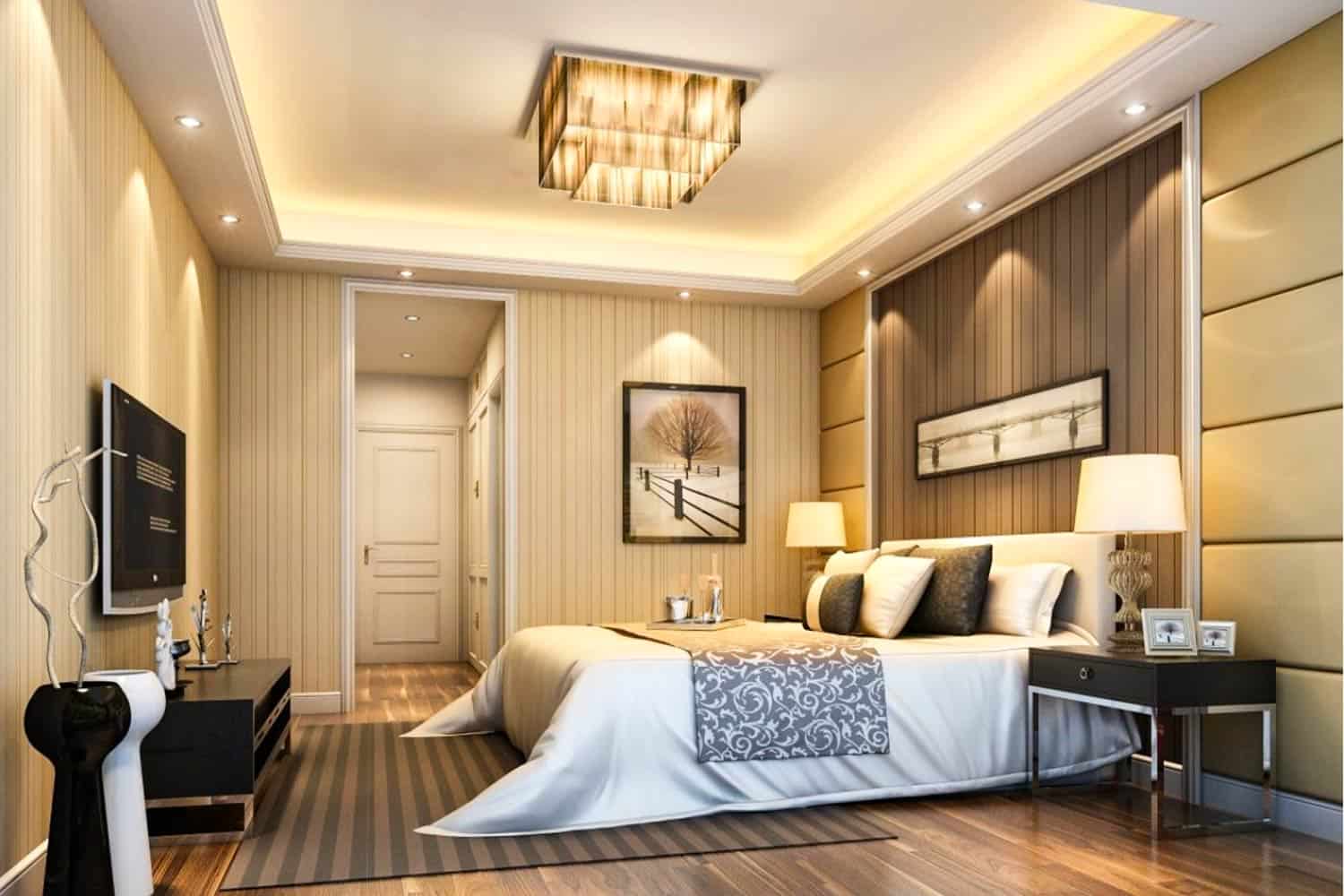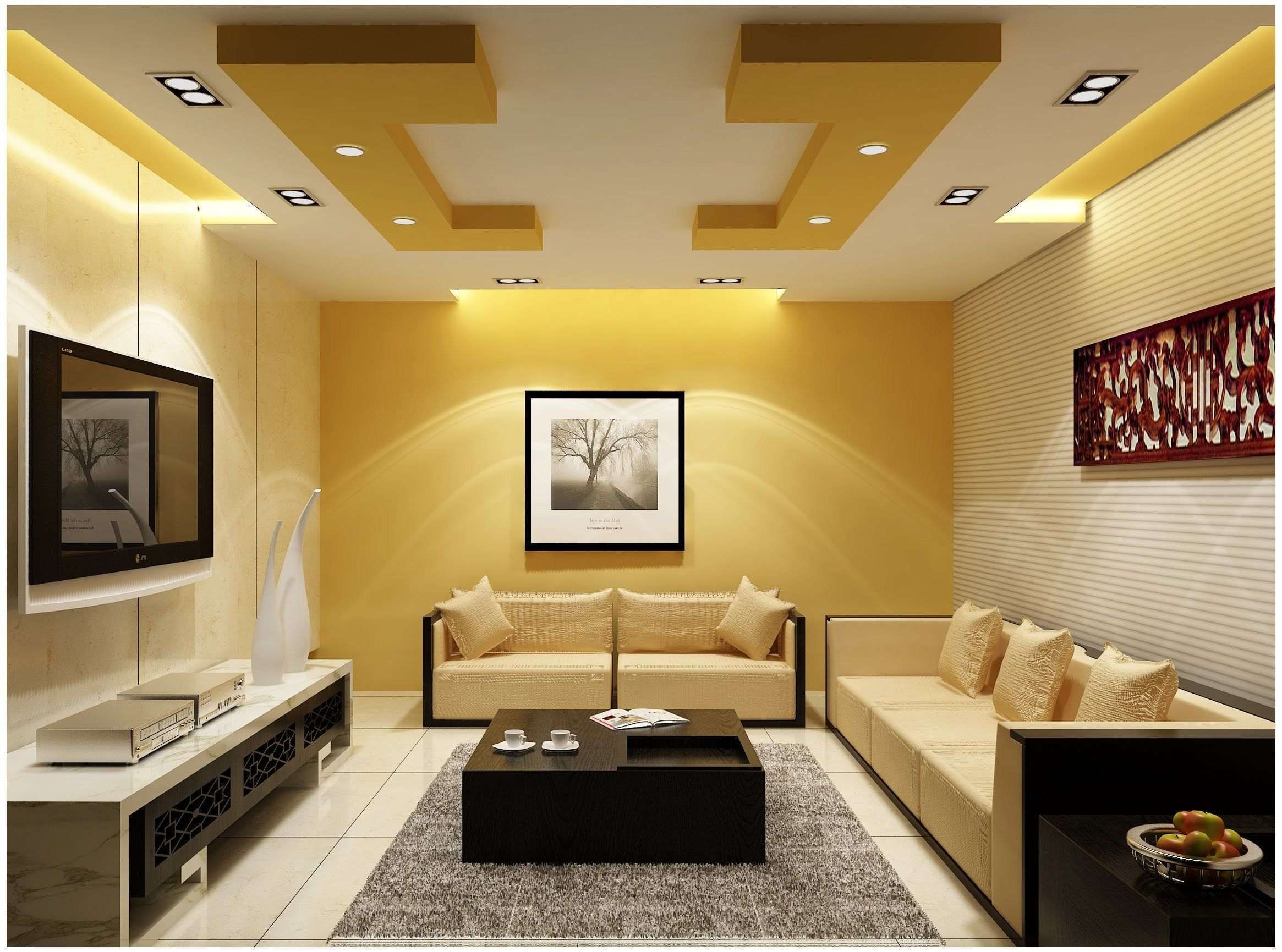Types of Bedroom Ceilings

The ceiling is often overlooked in interior design, but it plays a crucial role in setting the mood and ambiance of a bedroom. Choosing the right ceiling type can significantly impact the room’s overall aesthetic, lighting, and acoustics. Here’s a look at some popular bedroom ceiling types and their characteristics.
Vaulted Ceilings
Vaulted ceilings are a popular choice for bedrooms, offering a sense of grandeur and spaciousness. They are characterized by their sloping or arched shape, which adds height and depth to the room. Vaulted ceilings can be constructed using various materials, including wood, drywall, and plaster.
Pros
- Enhanced Space: Vaulted ceilings create an illusion of greater height and volume, making the bedroom feel more spacious and airy.
- Architectural Interest: They add a unique architectural element to the room, making it more visually appealing.
- Improved Lighting: The sloping shape of vaulted ceilings allows for more natural light to enter the room, making it feel brighter and more welcoming.
Cons
- Cost: Vaulted ceilings are typically more expensive to build than flat ceilings, due to the additional materials and labor required.
- Complexity: The construction of vaulted ceilings can be more complex and time-consuming, requiring specialized skills and expertise.
- Heating and Cooling: Vaulted ceilings can make it more difficult to heat and cool the room effectively, as the warm air tends to rise to the higher areas of the room.
Examples
Vaulted ceilings are often found in traditional homes with high ceilings, such as Victorian or Tudor-style houses. They can also be incorporated into modern designs, where they add a touch of sophistication and elegance. A vaulted ceiling can be combined with a skylight to create a dramatic effect, flooding the room with natural light.
Tray Ceilings
Tray ceilings are a popular choice for modern bedrooms, as they add a touch of sophistication and elegance. They are characterized by their recessed central panel, which is surrounded by a raised perimeter. Tray ceilings can be constructed using drywall, plaster, or wood.
Pros
- Visual Interest: The recessed panel creates a sense of depth and dimension, making the ceiling more visually interesting.
- Enhanced Lighting: The recessed panel can be used to house recessed lighting, creating a dramatic and elegant effect.
- Versatility: Tray ceilings can be customized with different shapes, sizes, and materials to suit any style.
Cons
- Cost: Tray ceilings are more expensive to build than flat ceilings, due to the additional materials and labor required.
- Complexity: The construction of tray ceilings can be more complex than flat ceilings, requiring specialized skills and expertise.
- Limited Height: Tray ceilings can reduce the overall height of the room, which may not be ideal for small bedrooms.
Examples
Tray ceilings are often found in modern and contemporary homes, where they add a touch of sophistication and elegance. They can be combined with recessed lighting to create a dramatic effect, highlighting the room’s features. A tray ceiling can be painted a contrasting color to the walls, adding a pop of color and visual interest.
Coffered Ceilings
Coffered ceilings are a classic design element that adds a touch of sophistication and elegance to any bedroom. They are characterized by their recessed panels, which are typically square or rectangular in shape. Coffered ceilings can be constructed using wood, drywall, or plaster.
Pros
- Architectural Detail: Coffered ceilings add a touch of architectural detail and sophistication to the room.
- Visual Interest: The recessed panels create a sense of depth and dimension, making the ceiling more visually interesting.
- Improved Acoustics: The recessed panels can help to improve the acoustics of the room, reducing echoes and reverberation.
Cons
- Cost: Coffered ceilings are more expensive to build than flat ceilings, due to the additional materials and labor required.
- Complexity: The construction of coffered ceilings can be complex and time-consuming, requiring specialized skills and expertise.
- Limited Height: Coffered ceilings can reduce the overall height of the room, which may not be ideal for small bedrooms.
Examples
Coffered ceilings are often found in traditional and formal homes, where they add a touch of sophistication and elegance. They can be combined with crown molding and other architectural details to create a cohesive and luxurious look. A coffered ceiling can be painted a contrasting color to the walls, adding a pop of color and visual interest.
Beamed Ceilings
Beamed ceilings are a popular choice for rustic and farmhouse-style bedrooms, as they add a touch of warmth and character to the room. They are characterized by their exposed wooden beams, which can be either structural or decorative.
Pros
- Rustic Charm: Beamed ceilings add a touch of rustic charm and warmth to the room.
- Visual Interest: The exposed beams create a sense of depth and dimension, making the ceiling more visually interesting.
- Improved Acoustics: The wooden beams can help to improve the acoustics of the room, reducing echoes and reverberation.
Cons
- Cost: Beamed ceilings can be expensive to build, depending on the type of wood used and the complexity of the design.
- Limited Height: Beamed ceilings can reduce the overall height of the room, which may not be ideal for small bedrooms.
- Maintenance: Wooden beams require regular maintenance to prevent them from warping, cracking, or rotting.
Examples
Beamed ceilings are often found in rustic and farmhouse-style homes, where they add a touch of warmth and character to the room. They can be combined with other rustic elements, such as stone fireplaces and exposed brick walls, to create a cohesive and inviting atmosphere. A beamed ceiling can be stained or painted to match the room’s decor.
Materials for Bedroom Ceilings: Best Ceiling For Bedroom

Choosing the right material for your bedroom ceiling can significantly impact the overall look, feel, and functionality of the space. It’s important to consider factors like durability, maintenance requirements, aesthetic appeal, and budget when making your decision.
Drywall
Drywall is a common and versatile material used for ceilings. It’s made from gypsum plaster sandwiched between two layers of paper.
Drywall is relatively inexpensive, easy to install, and can be painted or textured to achieve various styles. It’s also fire-resistant and offers good sound insulation. However, drywall is susceptible to moisture damage and can be prone to cracks over time.
Plaster
Plaster is a traditional ceiling material that offers a smooth and elegant finish. It’s applied in wet form and dries to a hard, durable surface.
Plaster ceilings are known for their elegance and ability to create intricate designs and moldings. They also provide good sound insulation. However, plaster can be more expensive and time-consuming to install than drywall. It’s also more susceptible to cracking and requires more maintenance.
Wood
Wood ceilings add warmth, character, and a natural touch to a bedroom. Various types of wood, from pine to cedar to oak, can be used, each offering its unique color, grain pattern, and durability.
Wood ceilings are durable, long-lasting, and can be stained or painted to match your décor. They also provide good insulation and sound absorption. However, wood ceilings can be more expensive than other options and require regular maintenance to prevent warping or rotting.
Tin
Tin ceilings are a stylish and durable option that can add a vintage or industrial feel to a bedroom. They’re made from thin sheets of tin that are often stamped with decorative patterns.
Tin ceilings are fire-resistant, moisture-resistant, and easy to clean. They can also be painted to match your décor. However, tin ceilings can be more expensive than other options and may require professional installation.
Materials Comparison Table
| Material | Pros | Cons | Typical Cost Range |
|---|---|---|---|
| Drywall | Inexpensive, easy to install, versatile, fire-resistant, good sound insulation | Susceptible to moisture damage, prone to cracking | $1-$3 per square foot |
| Plaster | Elegant finish, intricate designs possible, good sound insulation | Expensive, time-consuming to install, susceptible to cracking, requires more maintenance | $3-$5 per square foot |
| Wood | Warmth and character, natural look, durable, good insulation and sound absorption | Expensive, requires regular maintenance | $5-$10 per square foot |
| Tin | Stylish and durable, vintage or industrial look, fire-resistant, moisture-resistant, easy to clean | Expensive, may require professional installation | $8-$15 per square foot |
Material Impact on Style and Ambiance, Best ceiling for bedroom
The choice of ceiling material can significantly impact the overall style and ambiance of a bedroom. For example:
* Drywall can create a clean, modern look.
* Plaster adds a touch of elegance and sophistication.
* Wood creates a warm and inviting atmosphere.
* Tin can add a vintage or industrial touch.
Ultimately, the best ceiling material for your bedroom will depend on your personal preferences, budget, and the overall style you’re trying to achieve.
Design Considerations for Bedroom Ceilings

Your bedroom ceiling is a blank canvas, waiting for you to unleash your creativity and transform it into a personal haven. To achieve this, you must carefully consider your design choices, ensuring they harmoniously blend with your overall bedroom aesthetic.
Room Size and Style
The size and style of your bedroom play a crucial role in determining the best ceiling design. A small bedroom might benefit from a simple, light-colored ceiling to create an illusion of spaciousness, while a larger bedroom can accommodate more intricate designs. The style of your bedroom, whether modern, traditional, or eclectic, should guide your ceiling choice.
Matching the Ceiling to the Bedroom
A cohesive design is essential for a harmonious bedroom. Your ceiling should complement the walls, furniture, and lighting fixtures, creating a unified aesthetic.
- Walls: If your walls are adorned with bold patterns or vibrant colors, opt for a simple ceiling to balance the visual impact. Conversely, a plain wall can be enhanced with a textured or patterned ceiling.
- Furniture: Consider the style and color of your furniture. A modern bedroom with sleek furniture might benefit from a minimalist ceiling, while a traditional bedroom with ornate furniture could incorporate crown molding or decorative beams.
- Lighting Fixtures: The lighting fixtures in your bedroom should complement the ceiling design. For example, a chandelier would look stunning with a coffered ceiling, while a pendant light might be a better choice for a minimalist ceiling.
The Role of Color, Texture, and Patterns
Color, texture, and patterns can significantly impact the mood and feel of your bedroom.
- Color: Light colors like white, cream, and pastels create a sense of spaciousness and tranquility, while darker colors can make a room feel cozy and intimate. Consider the natural light in your bedroom when choosing a ceiling color.
- Texture: Texture adds depth and visual interest to your ceiling. Textured ceilings can range from subtle variations to dramatic patterns, creating a unique ambiance.
- Patterns: Patterns can add a touch of personality to your bedroom ceiling. Geometric patterns, floral designs, or even a starry night sky can create a focal point and enhance the overall aesthetic.
Ceiling Treatments
Ceiling treatments can elevate your bedroom’s design and create a sense of grandeur.
- Moldings: Moldings add a touch of elegance and sophistication to your ceiling. They come in various styles and sizes, allowing you to create different visual effects.
- Crown Molding: Crown molding is a decorative molding that runs along the junction of the ceiling and wall, adding a touch of classic charm. It can be simple or ornate, depending on your style preferences.
- Decorative Beams: Decorative beams can add a rustic or industrial touch to your bedroom. They can be made from wood, metal, or even faux materials, creating a visual focal point.
